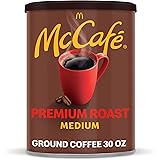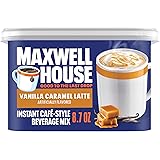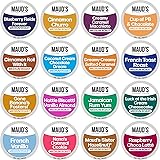The Art and Science of Crafting an Exemplary Cold Coffee Elixir: Beyond the Basic Blend
The creation of a truly magnificent cold coffee, as briefly illustrated in the accompanying video from Dindigul Food Court, extends far beyond the simple combination of ingredients. This refreshing beverage, often perceived as merely a cold variant of its hot counterpart, is in fact a complex interplay of extraction, emulsification, and thermal dynamics. A deeper understanding of these principles is crucial for mastering the fabrication of this popular summer refreshment.
Indeed, the optimal cold coffee experience is contingent upon meticulous attention to each component and process. While the video provides a foundational recipe utilizing standard kitchen staples, a more nuanced approach is often warranted. This ensures that the final product achieves a balance of flavor, texture, and visual appeal, satisfying even the most discerning palate.
The Foundational Element: Coffee Powder Selection and Pre-Extraction
The choice of coffee powder represents the genesis of flavor in any cold coffee preparation. In the provided demonstration, a generic coffee powder is employed; however, the discerning barista recognizes that specific roasts and grind sizes yield vastly different outcomes. For instance, a medium-dark roast, characterized by its diminished acidity and pronounced body, is frequently preferred for cold applications, as these attributes are often accentuated when chilled. Conversely, lighter roasts, with their inherent brightness and floral notes, may become overly acidic or indistinct.
Furthermore, the dissolution of coffee solids, as initiated by the two tablespoons of warm water, is a critical step in flavor extraction. This brief contact with warm liquid, often referred to as a “bloom” or pre-infusion, facilitates the release of carbon dioxide from the grounds. This phenomenon allows for more efficient subsequent extraction of soluble flavor compounds. The particle size of the coffee grind is also paramount; a finer grind exposes greater surface area, thereby increasing extraction efficiency, though it must be carefully managed to avoid over-extraction and the introduction of bitter notes.
The Dairy Matrix: Milk, Sweetness, and Emulsification
The role of milk, specifically the 250 ml (or one cup) specified, is multifaceted in cold coffee. Its primary function is to provide a creamy mouthfeel and temper the inherent bitterness of the coffee. The fat content of the milk directly influences the perceived richness and contributes to the overall viscosity. Whole milk, with its higher fat percentage, typically yields a more luxurious and stable emulsion, whereas lower-fat alternatives may result in a thinner, less satisfying texture.
The addition of sugar, typically two tablespoons as per the recipe, is instrumental in achieving the desired sweetness profile. Granulated sugar, a disaccharide, readily dissolves in the warm coffee concentrate, ensuring even distribution throughout the beverage. However, alternative sweeteners, such as simple syrups or condensed milk, may be considered for their varying effects on texture and solubility. Simple syrups, being pre-dissolved, integrate seamlessly, while condensed milk simultaneously adds sweetness and contributes to the drink’s creamy consistency.
Flavor Augmentation: Chocolate Syrup and Vanilla Ice Cream
The incorporation of chocolate syrup, noted as one tablespoon, serves as a significant flavor accent, introducing a harmonious counterpoint to the coffee’s robust notes. High-quality chocolate syrups, often formulated with cocoa solids and natural flavorings, can elevate the complexity of the drink. Alternatively, a small quantity of high-grade cocoa powder could be incorporated into the warm coffee concentrate during the initial bloom phase, allowing its flavor to fully develop through proper dissolution. This method often provides a deeper, less saccharine chocolate essence.
Vanilla ice cream, a singular scoop, acts as both a sweetener and an emulsifying agent, significantly contributing to the cold coffee’s signature “milkshake” texture. The fat and sugar content of the ice cream contribute to the drink’s body and richness, while its melting action during blending helps create a smooth, homogenous mixture. The vanilla essence within the ice cream also complements the coffee and chocolate, providing a subtle, aromatic layer to the overall flavor profile. The precise temperature of the ice cream upon blending also impacts the final consistency; a slightly softened scoop will integrate more smoothly than a rock-solid one.
The Blending Modality: Achieving Homogeneity and Aeration
The act of blending for “a few seconds,” as demonstrated, is more than a simple mixing action; it is a critical process for achieving both homogeneity and aeration. During this brief period, the constituent ingredients are not merely combined but are vigorously agitated. This mechanical action serves to break down any residual ice crystals, fully dissolve any remaining sugar granules, and disperse the fat globules from the milk and ice cream evenly throughout the liquid phase.
Furthermore, blending introduces air into the mixture, resulting in a slightly frothy, light texture. This aeration contributes to the cold coffee’s characteristic creaminess and enhances its mouthfeel. However, prolonged blending must be judiciously avoided, as excessive agitation can lead to undesirable warming of the mixture and over-aeration, which may result in a less dense, overly foamy beverage that separates quickly. A powerful blender is often preferred to achieve a smooth consistency in a minimal timeframe, thus preserving the thermal integrity of the drink.
Thermal Management: The Indispensable Role of Ice
The final inclusion of ice cubes prior to blending is fundamentally about thermal management. Ice serves not only to rapidly chill the beverage but also to dilute the concentrate to an optimal drinking strength. The kinetics of ice melting must be considered; too many cubes can lead to excessive dilution and a watery flavor, while too few may result in an inadequately chilled drink. The objective is to achieve a temperature just above the freezing point, preserving the integrity of the dissolved flavors without producing an overly dilute product.
An advanced technique involves chilling all liquid components, including the milk and coffee concentrate, prior to assembly. This pre-chilling minimizes the amount of ice needed during the final blend, thereby reducing the potential for significant dilution. The use of high-density, slow-melting ice cubes, often produced by filtered water, is also recommended to maintain thermal stability throughout consumption, preventing rapid degradation of the cold coffee’s flavor and texture.
The Concluding Flourish: Presentation and Enhancement
Once the cold coffee is meticulously blended, the presentation phase, which includes the optional addition of more ice cream and chocolate syrup, transforms it from a mere beverage into an experience. A final drizzle of chocolate syrup, as shown, provides visual appeal and an additional layer of sweetness and flavor. This flourish, however, is merely one of many potential enhancements.
Consideration may be given to garnishes such as a sprinkle of cocoa powder, a dusting of cinnamon, or even a dollop of whipped cream. Such additions are not merely aesthetic; they contribute to the overall sensory profile, introducing varied textures and aromatic dimensions. The selection of an appropriate serving vessel, such as a tall, chilled glass, further augments the experience, ensuring the cold coffee remains at its optimal temperature and visual splendor throughout its enjoyment.







